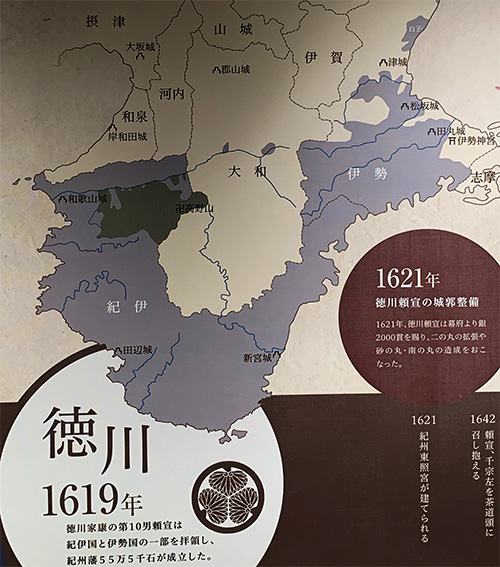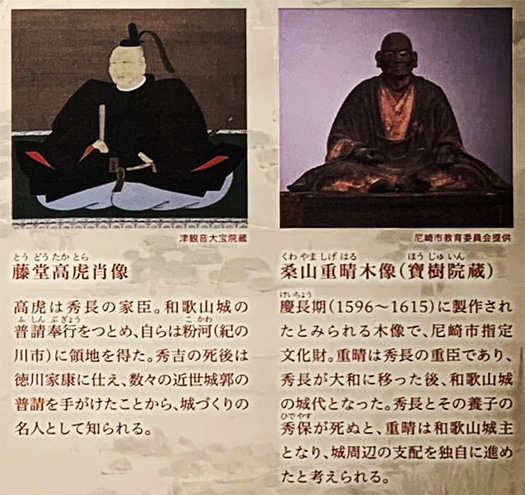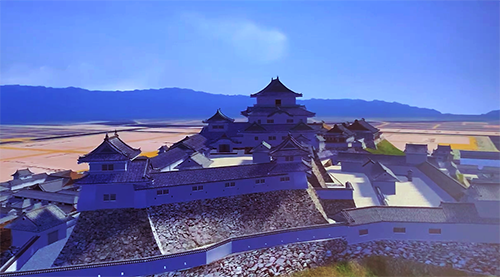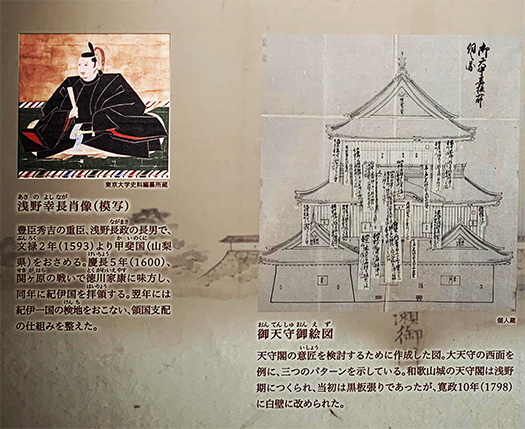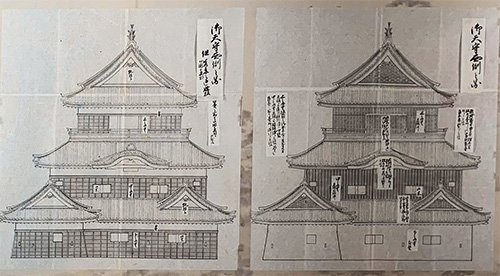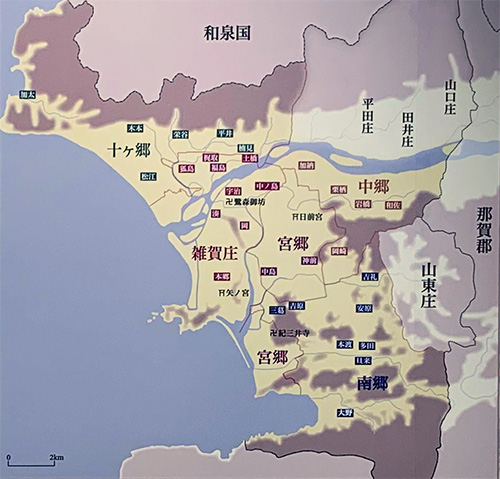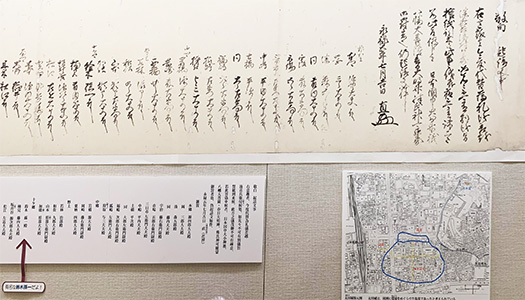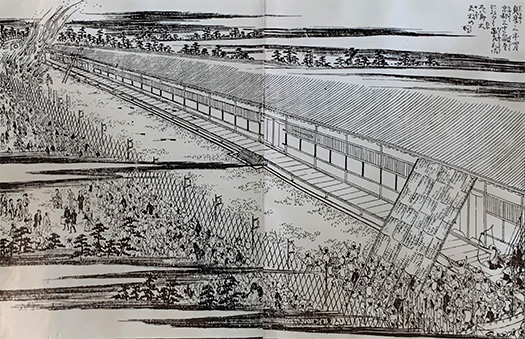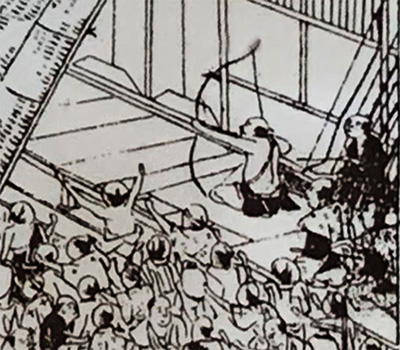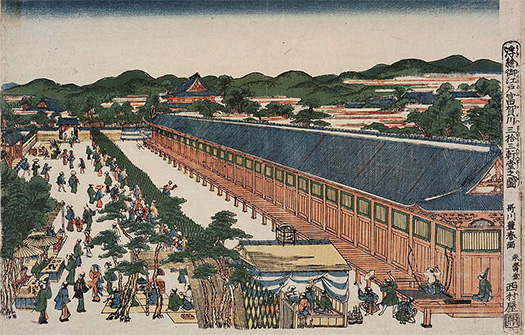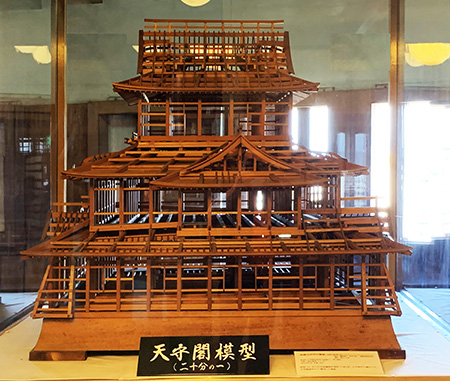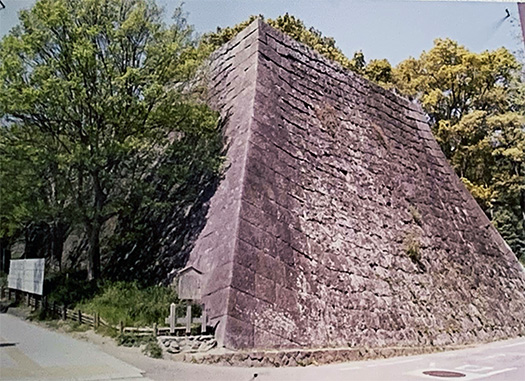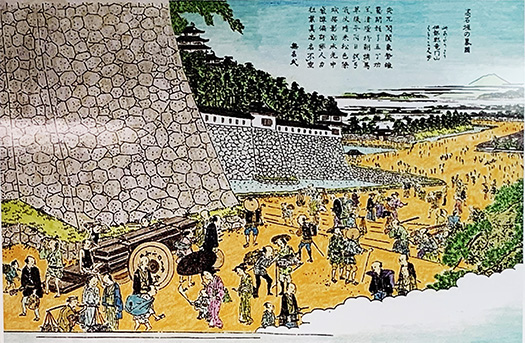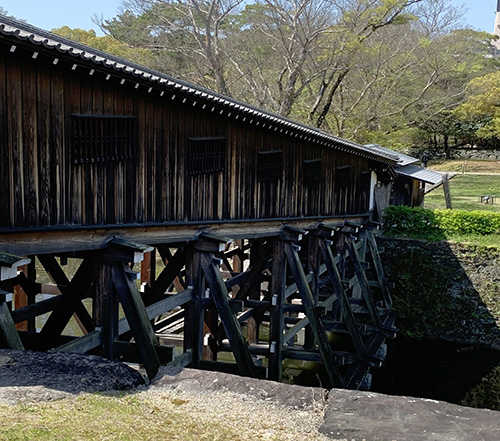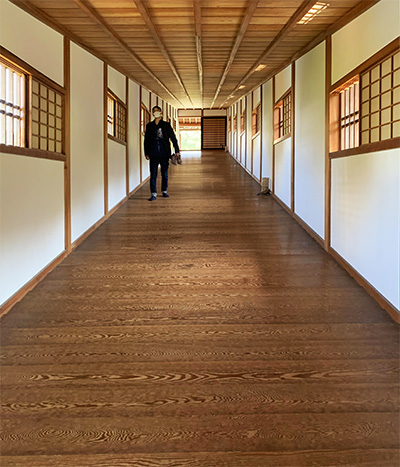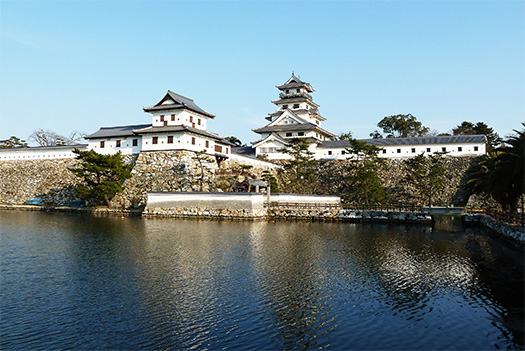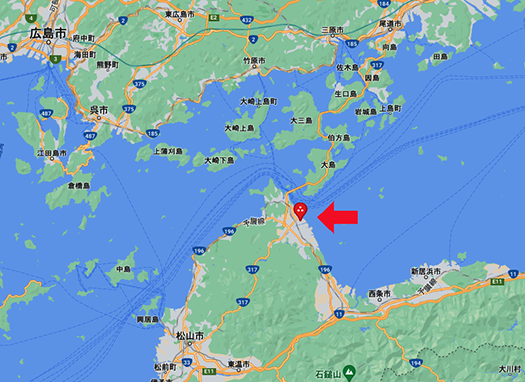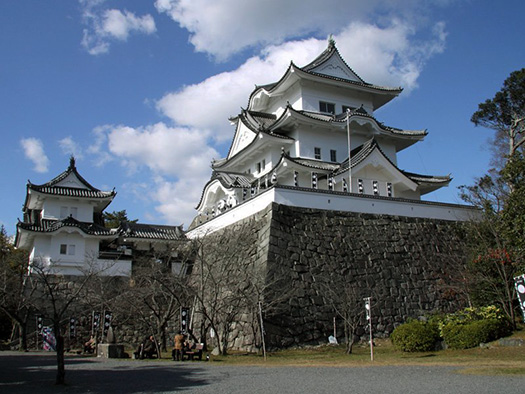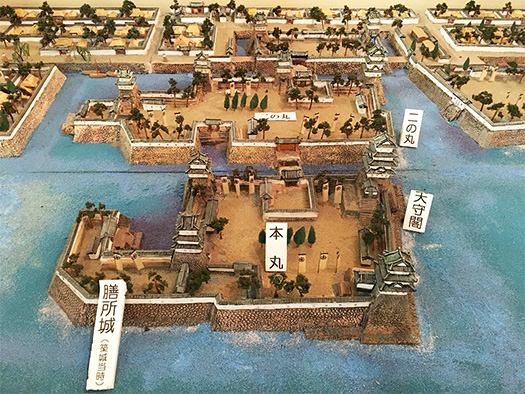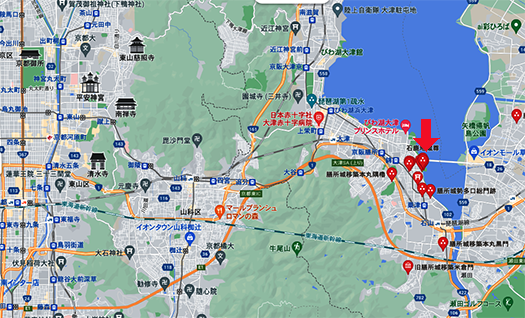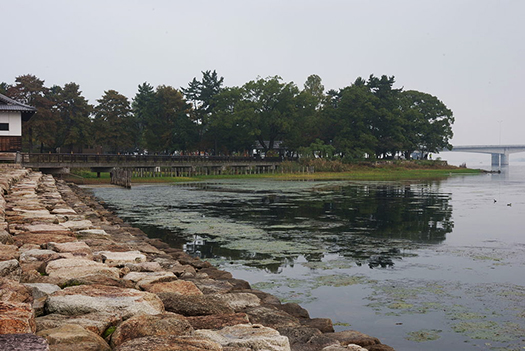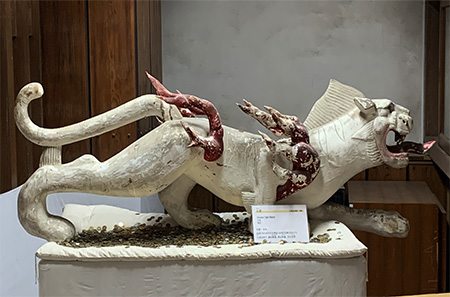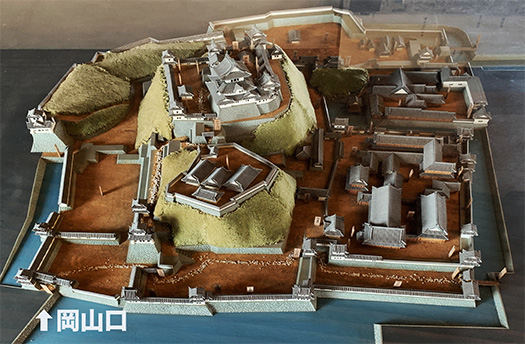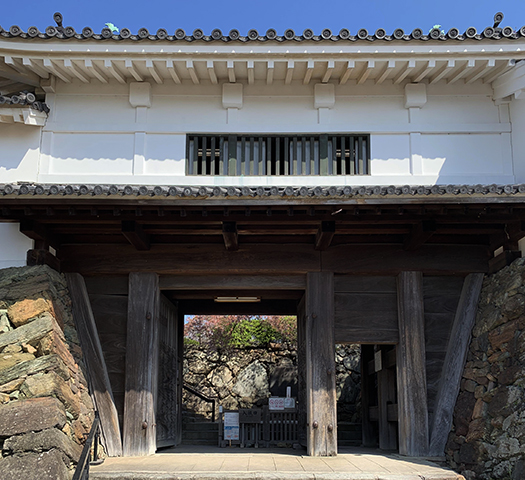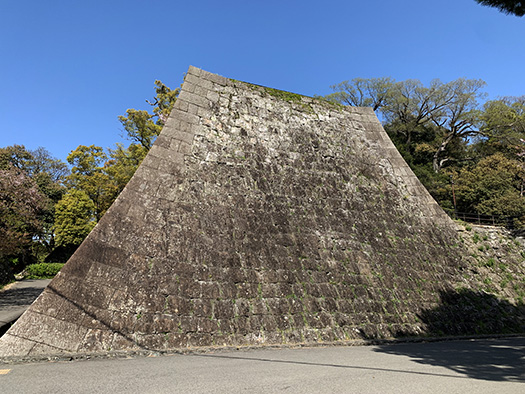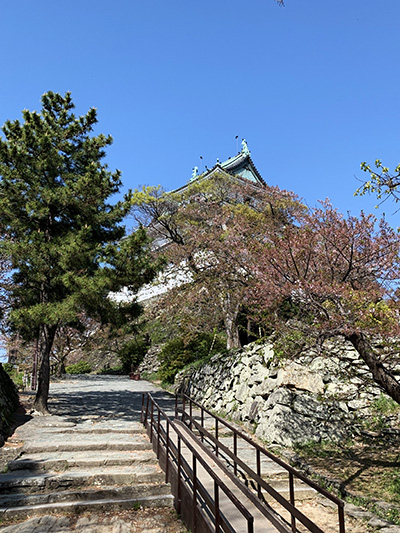
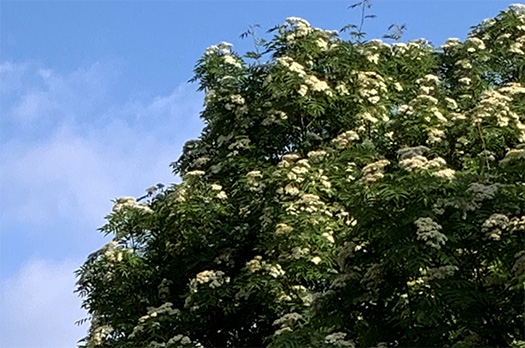
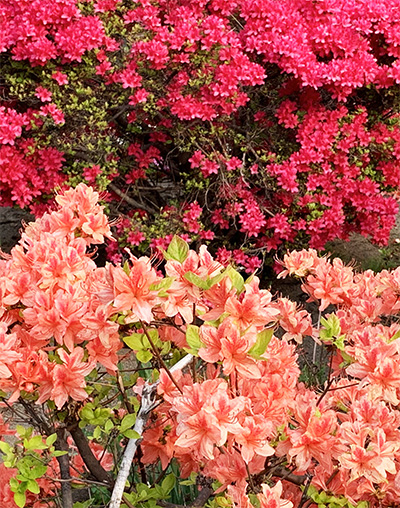
サクラの季節が終わったあと、ちょっとするとライラックが咲き誇る札幌。
ちょうど今週末からは「ライラック祭り」の季節。
ことしはついに3年ぶりのリアル開催という喜ばしい知らせ。
フランス名で「リラ」というこの花は独特の芳香で知られ、
初夏の北海道が「天国に一番近い」と思われる重要な「香り」要素。
さわやかな青空、ここちよい空気感にさらに彩りを与えてくれる。
日本に初めてライラックが持ち込まれたのは1879年とされる。
函館市のイギリス領事であったリチャード・ユースデンが
「病気の人が病院を必要なように健康人には休憩の場が必要だ」と訴え、
函館公園が完成。その時ユースデン夫人はイギリスから西洋クルミとライラックの苗を
取り寄せ植栽したのが始まりとされる。
一方札幌市ではスミス女学校(現・北星学園女子中学高等学校)の創設者である、
サラ・C・スミスが1890年にアメリカに一時帰国した際に、
自分の庭のライラックの苗を札幌に持ち込んだのが始まりとのこと。
日本の文化の中で北海道、札幌が独特のロマンチズムを感じさせるのは、
このような坂の上の雲の欧米文化を日本が受け入れて
しかもそのことに大きな民族レベルでの好感を寄せていたことが大きい。
札幌の街がこのような文化性の象徴として赤煉瓦庁舎や時計台建築とともに、
ライラックを街のシンボルとしてきたことは象徴的だと思える。
この開花時期はほかの花々もほぼ一斉に開花時期を迎えて
さまざまな芳香で街中が魅惑的な空間と化す。まさに天国・・・。
一方でこれも札幌の街路樹としてライラックに似た白い花を咲かせる
「ハシドイ」は日本の高地性の在来樹木。
初夏になるとライラックのように小さな花が集まった花房をつけ、とてもいい香り。
ライラックに似た品のいい芳香で夕方になると強くなる。樹高は10メートルほど。
英名の通称は”Japanese Lilac Tree” だそうで日本や朝鮮半島に自生している。
モクセイ科のライラックの仲間で、アメリカには北大で教鞭を執ったクラーク博士が
ハシドイの種子を日本から持ち帰っているという。
こういった経緯からはやはり日本社会と欧米社会の文化のブレンドを
つよく意識させてくれる。
本ブログとしてはほかの花々を代表させてツツジを添えました(笑)。
ピンクと白の木の花への対照としてはやはり低灌木のツツジがいいかと。
わたしは明治以降、欧米との文化ブレンドに取り組んだ北海道の
短い歴史だけれど、日本にとって重要な文化風土に強く愛着を持っています。
そして欧米的価値感とはやはりその基本は民主主義なのだろうと思います。
3年ぶりライラック祭り開催は現代世界へのメッセージになるのかも。
English version⬇
Lilacs & Hashidoi Like a gathering of many beautiful women in Sapporo
Sapporo, Hokkaido, a city that practiced cultural fusion with Europe and America. The colors of the season that is “closest to heaven”. The cultural power to exterminate foolish dictatorial tyranny. …
After the cherry blossom season is over, lilacs will be in full bloom in Sapporo in a short while.
This weekend is the season of the “Lilac Festival.
This year, the festival will finally be held for the first time in three years.
This flower, called “lilac” in France, is known for its unique fragrance.
It is an important “fragrance” element that makes Hokkaido in early summer the “closest to heaven.
It adds even more color to the crisp blue sky and pleasant air.
Lilacs were first brought to Japan in 1879.
Richard Eusden, the British consul in Hakodate, was the first to introduce lilacs to Japan.
Richard Eusden, the British consul in Hakodate, argued that “healthy people need a place to rest, just as sick people need hospitals,” and Hakodate Park was completed.
Hakodate Park was completed. At that time, Mrs. Yousden brought walnut and lilac seedlings from England and planted them.
The park is said to have begun when Mrs. Eusden imported walnut and lilac seedlings from England and planted them in the park.
Meanwhile, in Sapporo, Sarah C. Smith, founder of the Smith School for Girls (now Hokusei Gakuen Girls’ Junior and Senior High School), was born in 1890.
Sarah C. Smith, the founder of Smith School for Girls (now Hokusei Gakuen Girls’ Junior and Senior High School)
She brought lilac seedlings from her garden to Sapporo.
In Japanese culture, Hokkaido and Sapporo have a distinct romanticism.
Japan’s acceptance of this kind of cloud-on-the-slope Western culture.
The city of Sapporo is a place where this culture is still alive and well.
The city of Sapporo has been a symbol of this culture, with the red-brick government office building and clock tower, and the lilac as the city symbol.
The fact that the city of Sapporo has made the lilac the symbol of the city, along with the red-brick government office building and the clock tower, is symbolic of this cultural identity.
During this blooming season, other flowers are also in bloom at the same time, and the city is filled with various fragrances.
The city is transformed into an enchanting space with a variety of fragrances. It is truly heaven.
On the other hand, the “hashidoi,” which blooms white flowers similar to lilacs, is also a street tree in Sapporo.
Hashidoi is a native tree of Japan’s highlands.
In early summer, it produces clusters of small flowers like lilacs and has a very nice fragrance.
The fragrance is elegant, similar to that of lilacs, and becomes stronger in the evening. The tree is about 10 meters tall.
Its common name in English is “Japanese Lilac Tree,” and it grows wild in Japan and the Korean Peninsula.
It is a member of the lilac family of the Moraceae, and Dr. Clark, who taught at Hokkaido University in the U.S., has been a professor of Japanese Lilac at the University of California, Berkeley.
Dr. Clark, who taught at Hokkaido University, is said to have brought seeds of the hashidoi back from Japan.
This is a good example of the blending of Japanese and Western cultures.
This is a good example of the blending of the cultures of Japanese and Western societies.
For this blog, I have included azaleas to represent other flowers (smile).
I think azaleas, which are low shrubs, are a good contrast to the pink and white flowers of trees.
I am interested in the history of Hokkaido’s efforts since the Meiji era to blend its culture with that of Europe and America.
I have a strong attachment to the cultural climate of Hokkaido, which has a short history but is important to Japan.
And I believe that the basis of the Western sense of values is democracy.
The holding of the Lilac Festival for the first time in three years may be a message to the modern world.
Posted on 5月 22nd, 2022 by 三木 奎吾
Filed under: こちら発行人です, 日本社会・文化研究 | No Comments »


